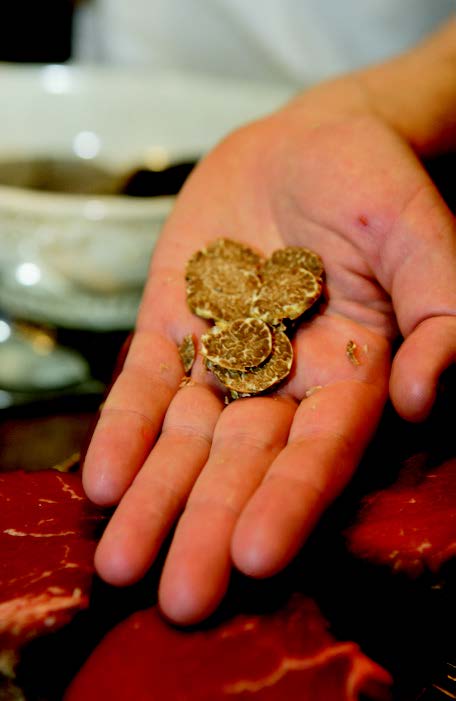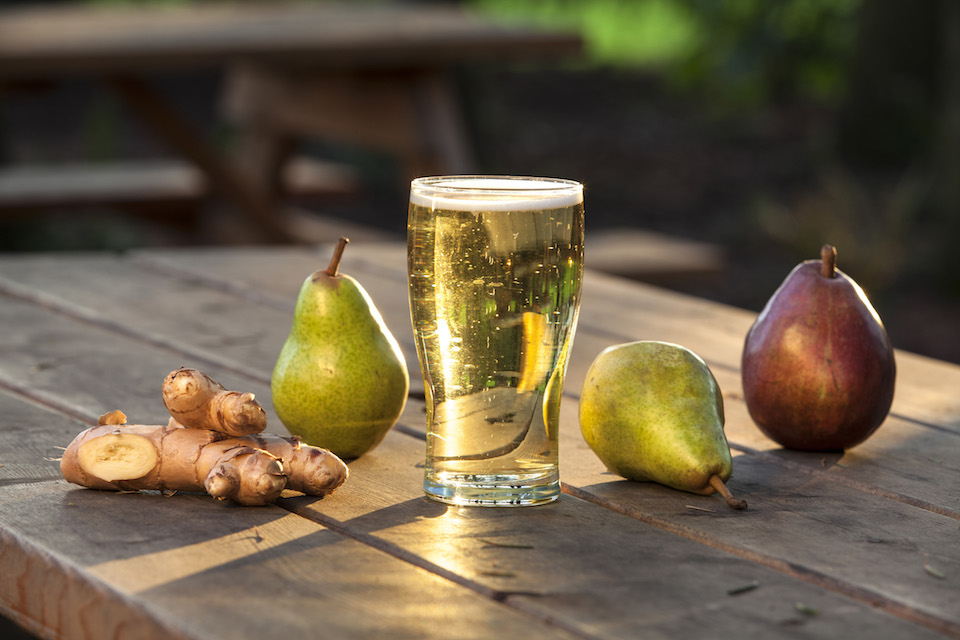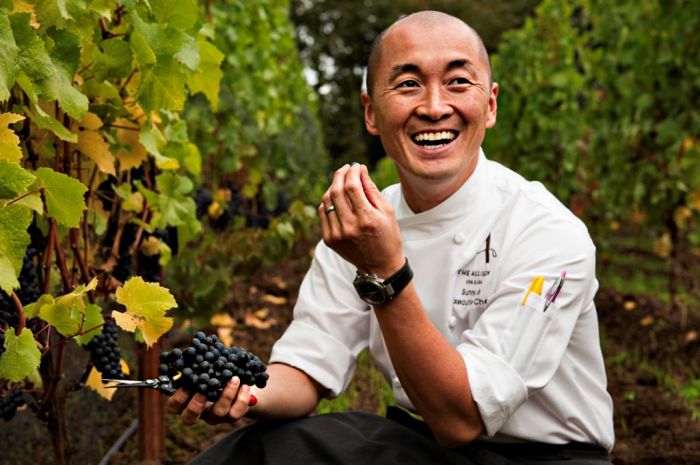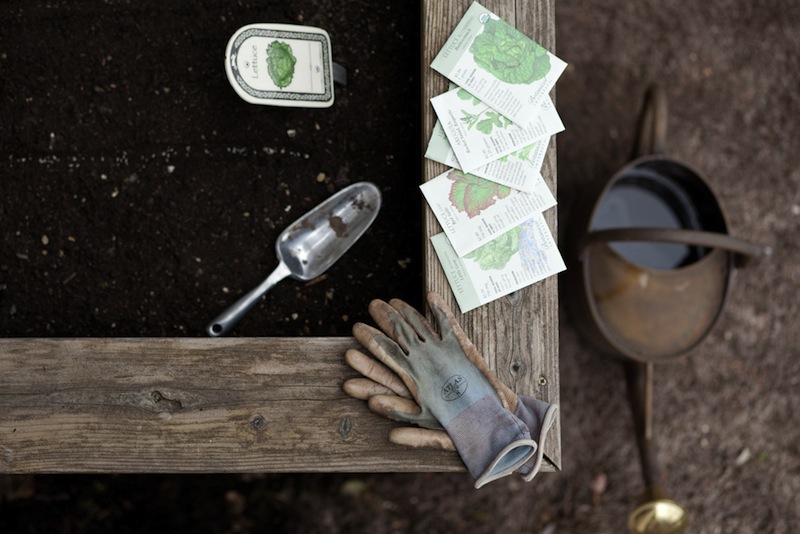Under a canopy of Douglas firs, down on their knees, they gently pushed away the top layer of soft, dark duff over the tree roots. Joyous gasps went up through the grove as neophyte foragers began uncovering dozens of one of the world’s most prized culinary delicacies – truffles.
This is just one activity of the Oregon Truffle Festival – an annual weekend of culinary events dedicated to this rare, buried treasure, in season in its native soil. The festival, set for January 24-26, draws guests from around the state, the nation, and abroad.
The festival is the first of its kind in North America, has been growing steadily since it started in 2006, and now draws about 1,000 participants. Some come to savor the pungent, aromatic mushroom as prepared by acclaimed chefs of the Northwest. Others bring their dogs to train them to hunt the luxury ingredient. Others come to meet with the experts about cultivating the truffle, one of the world’s most expensive foods.
New features at the festival this year include:
– Oregon craft beers and spirits will join outstanding Oregon wines in events
– A truffle tasting and pairing event with beer, wine and spirits will be hosted by Karen Page and Andrew Dornenburg, two-time James Beard Award-winning authors of The Flavor Bible, What to Drink with What You Eat, The Food Lover’s Guide to Wine and other notable books. These international culinary luminaries will be special guests throughout the festival weekend.
– The “Foraged Foods & Fine Fermentations Grand Truffle Tasting Dine Around” will feature eight outstanding chefs pairing truffles with beer, wine and spirits.
– A sixth course has been added to the Grand Dinner: truffled hors d’oeuvres paired with artisan cocktails.
– A Villa Weekend at Pfeiffer Vineyards, hosted by owners Danuta and Robin Pfeiffer. This elegant, intimate gathering at their beautiful Fireside Pavillion, is limited to just a few guests.
Despite six decades of research at OSU in mycology, truffles remain elusive—even to experts. Like other wild mushrooms, the quantity and the location of the truffle varies from season to season. Unlike some mushrooms, however, truffles do not grow in plain sight, they grow underground in a symbiotic relationship with tree roots.
Outside of Southern Europe, the Pacific Northwest is among the two other locales in the world where edible truffles naturally occur. A black varietal also grows in China, though its reputation is that of little aroma and flavor. Three native edible species thrive here: the Oregon Winter White, the Spring White and the Oregon Black truffle.
Lefevre unearthed a patch of Oregon Winter Whites on his maiden foray and has since become well versed in mycology. In his eighteen-year pursuit of truffles, he’s progressed from foraging for native species to pioneering a new industry: the cultivation of the coveted European varietals. Particularly well suited for Oregon’s climate, truffle cultivation is considered the holy grail of agriculture.
In Europe, the truffle is steeped in a rich and elusive culinary history. What began as simple peasant fare in the Dark Ages ascended to the ranks of a high society obsession in sixteenth century France. Traditional preparations involved shaving bits over warm pasta or omelets. In 1825, legendary French gastronome Jean Brillat-Savarin lauded the truffle, “the diamond of the kitchen.”
Truffles bind well with fat and are typically used in combination with oil, butter and eggs. Variably, they’re described as reminiscent of mango, pineapple, walnuts and deep-fried sunflower. Restaurants use shaved bits of white truffles in dishes such as creamy risottos and egg dishes, while black truffles are often incorporated in desserts.
Indeed ripe Oregon truffles are “a strong bass note in music,” says Ron Paul, Portland chef and restaurateur. “It thumps and you know it.”
Lefevre and Scott are now on a mission to make Oregon the preeminent culinary destination for both North American and European truffles, and to dissolve the secrecy behind the industry. To that end, the pair founded the Oregon Truffle Festival in 2006 as an educational forum and as a venue for tasting high quality truffles. The January festival brings together chefs, growers, harvesters, and foodies to share meals and knowledge. Now in its eighth year, the festival routinely attracts experts from France, Italy, New Zealand, Japan and South Africa.
“One of the goals of the festival is to break down the secrecy and to create a community,” Scott says. “There’s plenty of room in the industry and the growth potential is enormous.” This year’s festival is slated for the weekend of January 28 in Eugene.
“We’re not trying to emulate Tuscany or Provence,” says Scott. “Instead, we want to build on Old World traditions and meld Northwest culture to remain true to Oregon.”
“New World” truffles, or those found in the Pacific Northwest, are slowly entering the culinary vernacular. In 1976, Oregonian and famed chef James Beard was quoted as preferring Oregon truffles to Italian. Despite Beard’s endorsement, Oregon truffles have long suffered from a reputation as being inferior to their European counterparts. “When I experienced French and Oregon black truffles side by side for the first time, I discovered that Oregon truffles had far more culinary value than people realized,” Lefevre says. “They had been described as weak. A ripe Oregon truffle is anything but weak.”
Despite their long-standing elite reputation and the hefty price tag of French and Italian varietals, truffles are not just fare for elite restaurants. “Oregon truffles are the ultimate ingredient and are at a price point that makes them accessible,” Scott observes. Truffles typically cost about $60 for three ounces.
Jack Czarnecki, long-time wild mushroom forager and retired chef of the Joel Palmer House in Dayton, recently created the first non-synthetic, all natural truffle oil using Oregon white truffles.
“There are real challenges associated with the truffle,” says Czarnecki. “It’s subconscious, sexual and appeals to the nose. It’s a challenge to translate that into something you can taste.”
The Holy Grail of Cultivation
As with transplanted French wine grapevines that launched Willamette Valley Pinot noir, Oregon’s climate and soil are well suited for growing of European truffles. Cultivation, a relatively new endeavor, involves inoculating host tree roots with truffle spores. The trees are then planted to create truffieres, or truffle farms.
New World Truffieres, a Eugene-based company founded by Lefevre in 2000, produces seedlings, planted in 2004, that were meticulously inoculated with Italian white Bianchetto and French Pèrigord black truffles. Though roughly 50,000 acres of truffle farms exist in Europe, Lefevre estimates that only 300 acres have been planted in the United States, and most truffle farms here are less than eight years old.
As young and as small as it may be, it’s an industry on the cusp. When the orchards reach maturity, five to seven years after planting, they’re expected to produce up to fifty pounds an acre annually. In Oregon, the economic implications are considerable.
The Harvest Challenge
Harvesting practices remain a sticking point for both the cultivated and native varieties. This issue has contributed to the lackluster reputation of Oregon truffles, as many entering the market are unripe and lack flavor. Truffles grow slowly underground for months becoming fully ripe and fragrant for approximately a week near the end of their maturation between December and June depending on which kind of truffle. Timing of the harvest is key.
The best practices for harvesting truffles involve trained dogs whose sensitive noses can tune into the ripe scent though the truffle may be inches below the forest floor. Historically, pigs were used in this endeavor as the odor emitted by truffles are said to be redolent of a pig’s sex hormones. Later, domesticated dogs replaced pigs as the preferred hunting companions.
Though relatively easy to train, there are only three working truffle dogs in Oregon, according to Lefevre, which means that most truffles are rake-harvested by people. This inferior method often leads to unripe truffles and an inferior taste.
Lefevre recounts a hunt for Oregon Black Truffles one winter. During a three-hour foray, his truffle-hunting dog, Stella, harvested three pounds of sizable ripe truffles. Meanwhile, Lefevre, armed with a rake, unearthed a single walnut-sized specimen. “Dogs are the salvation of the industry,” he says. “Until truffles are harvested entirely by dogs, people will be disappointed.”









can truffles grow in s.Oregon